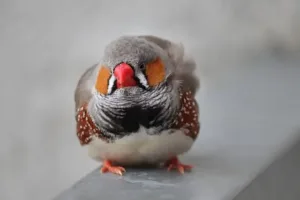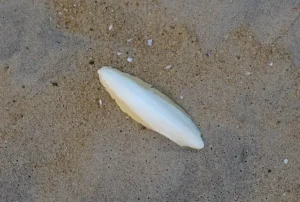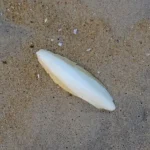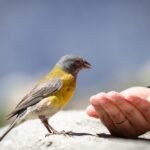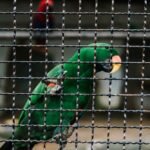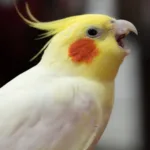Birds can make an excellent companion for a young pet owner. Although, they require a bit more attention than other types of pets, caring for a bird can offer a learning experience and a sense of responsibility to kids.
When choosing a bird for your kid, you need to consider several factors, as not all birds are appropriate for children. You need to consider the bird’s size, temperament, and care requirements to ensure a positive and safe interaction between them and your child.
Smaller species are often better suited for children because of their manageable size and generally friendly nature. Moreover, it’s important to teach kids the basics of bird care and supervise them when interacting with the bird.
Quick Navigation
Best Pet Birds For Kids
Here are our top 8 picks for the best pet birds for kids:
Finch

Aesthetically pleasing and easy to care for, Finches are great watch-only birds that do not demand attention or socialization from their owners. Finches should always be kept in pairs or a flock. A finch that is housed alone will be unhappy.
However, keeping two finches instead of one does not make a kid’s job as a new bird owner any harder. Finches make good pet birds for kids because of their minimal care needs.
They prefer to be social with their own kind and do not take up much of your time. They make tuneful peeps and chirps from their cage, which are soothing to the ears.
Finches need a roomy enclosure since they spend most of their day inside their cages. A large horizontal cage with multiple perches is ideal.
Zebra finches and Society finches are two of the most popular finches kept as pets, though there are a variety of others that you can consider.
Canary
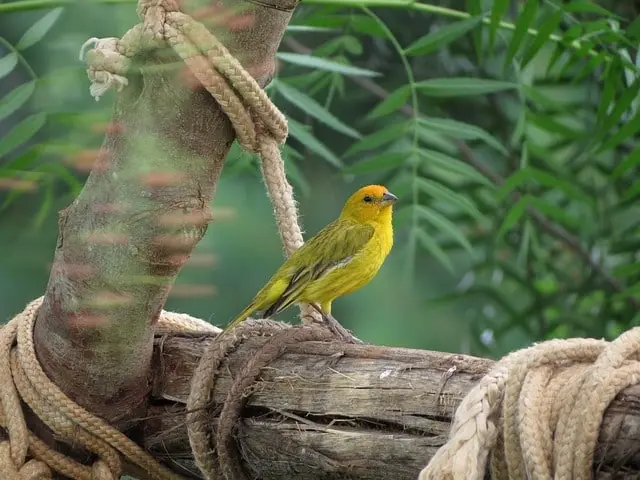
Canaries are prized for their mellifluous songs and beautiful appearance. A canary is happy being housed alone singing to its heart’s content.
Although canaries belong to the finch family, they do not share all of their characteristics. Unlike finches, canaries are solitary birds.
Taking care of a canary is pretty easy – you only need to change their food and water bowls and clean their cages. They do not need social interaction or time out of the cage.
Canaries exercise their muscles by moving around and flying inside their cage, so they need a large enough enclosure. With proper care and a healthy diet, Canaries can live up to 15 years.
Dove
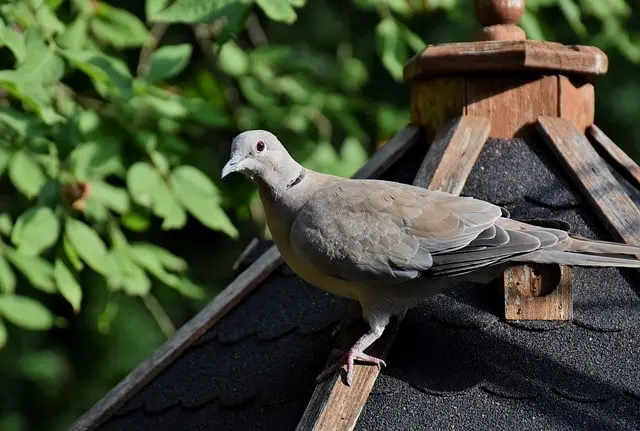
Doves are known for their peaceful demeanor and amiable nature. Doves need little socialization from their human caretakers, though they enjoy being in the company of another dove.
They are vocal birds, making cooing sounds almost constantly throughout the day. While their cooing is fairly regular, it is not disturbing and many people find it to be pleasing.
Doves do not have to leave their cages, so they mostly get their physical exercise through flying. It is important that you provide them with a roomy cage for flying and plenty of toys and perches. The lifespan of a dove is around 10-15 years.
Budgie
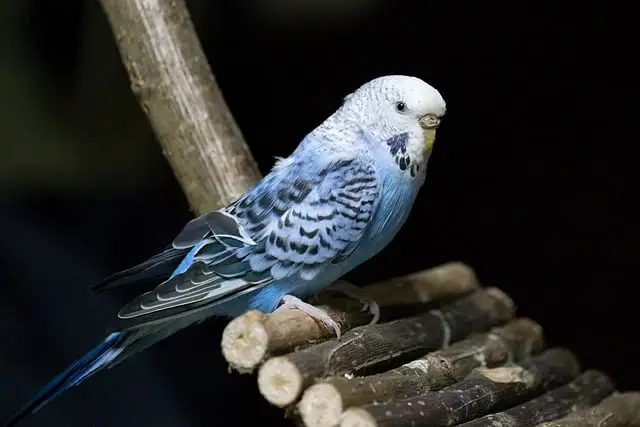
The budgerigar is a playful and intelligent bird that is a friend to everyone. Budgies can make a suitable parrot for older children, though they need to be supervised on how to be respectful of the bird’s boundaries and interact with them in a gentle manner.
Budgies require a bit more work than birds like finches and canaries who are content with minimal interaction. Budgies are highly social birds that demand a lot of time for socialization.
However, budgies can also make just as good of a watch-only bird. When kept in pairs or a group, their socialization needs can be fulfilled by one another. This type of arrangement is better suited for children as it minimizes the need for one-on-one interaction.
Budgies vocalize frequently with chirps and whistles, though they are not very loud. They are also skilled at mimicking and can learn sounds and words very easily. Children can have fun interacting with a budgie as it talks and mimics different sounds. A budgie’s average lifespan is between 8-10 years, though some can live up to 12 years.
Bourke’s Parakeet

The Bourke’s Parakeet is a small parrot native to Australia. It is quite popular as an aviary bird because of its gentle and calm nature. These birds stay quiet for the majority of the day, except during the sunset.
They should be housed in a big flight cage so they have open space to stretch their wings. The Bourke’s parakeet needs minimal human interaction relative to other parrots, which makes this an ideal candidate for a pet bird for kids. They feed on a pelleted diet along with fruits and veggies. Bourke’s parakeet lives for about 10-15 years.
Parrotlets
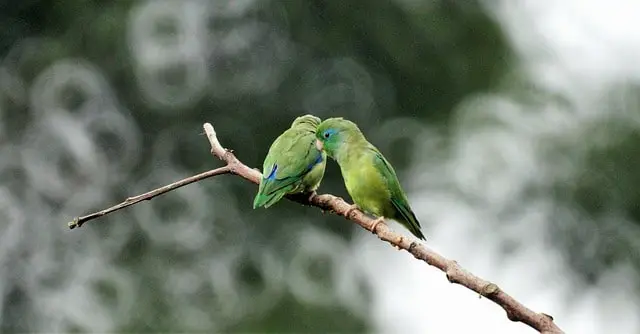
Parrotlets are smart, gentle, and playful birds that get along well with people. They are small-sized parrots, so it might not be safe for a younger child to handle them.
Even though they’re small, these birds are super active and need lots of space to fly around. Make sure their cage has comfy perches and toys, and they should get some time out of the cage every day. Parrotlets live long lives, typically between 15 and 20 years.
Cockatiel
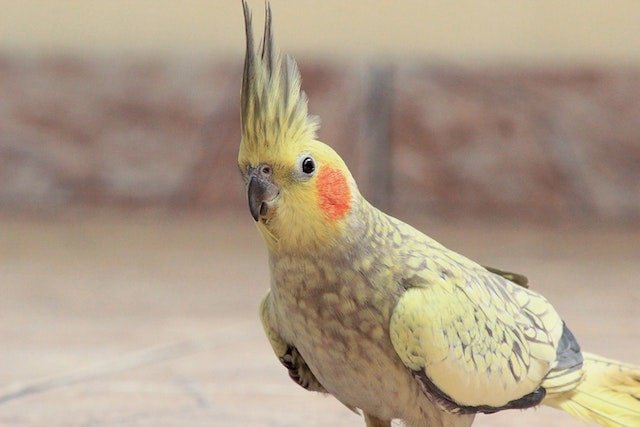
Cockatiels can make the right pet birds for children given they are prepared to take care of them. Cockatiels thrive on a routine and do well following a schedule for mealtimes, training, bathing, and bedtime.
The predictable nature of things makes them comfortable around you and helps develop a stronger bond. This also provides an opportunity for the kid who is taking care of the bird to learn discipline and the value of routine.
Female cockatiels generally have a calm temperament and are less socially demanding. They are often less vocal than male cockatiels, but they still make whistles and chirping sounds frequently.
They require plenty of socialization including a large cage with toys and enrichment. Cockatiels live for 10–15 years, so they are a long-term commitment.
Lovebirds
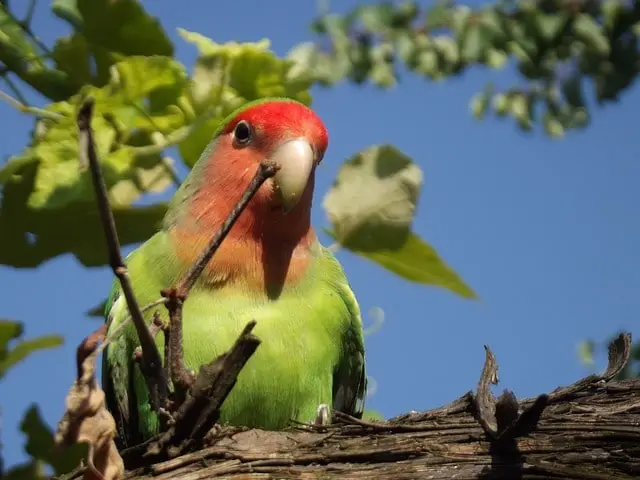
Lovebirds are small birds that are adored for their melodic voices and high level of intelligence. They are curious and at times mischievous, which is why they are better suited for an older child with some experience.
Caring for a lovebird certainly requires some work as these birds have high social needs and an inquisitive nature. They can live up to 20 years in captivity and are capable of forming strong bonds. Lovebirds are fun birds to hang out with and bonding with them can be a rewarding experience.
